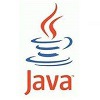OkHttp3源码详解(一) Request类
每一次网络请求都是一个Request,Request是对url,method,header,body的封装,也是对Http协议中请求行,请求头,实体内容的封装
public final class Request {
private final HttpUrl url;
private final String method;
private final Headers headers;
private final RequestBody body;
private final Object tag;
private volatile CacheControl cacheControl; // Lazily initialized.1.HttpUrl
HttpUrl主要用来规范普通的url连接,并且解析url的组成部分
现通过下面的例子来示例httpUrl的使用
https://www.google.com/search?q=maplejaw
①使用parse解析url字符串:
1. HttpUrl url = HttpUrl.parse("https://www.google.com/search?q=maplejaw");②通过构造者模式来常见:
1. HttpUrl url = new HttpUrl.Builder()
2. .scheme("https")
3. .host("www.google.com")
4. .addPathSegment("search")
5. .addQueryParameter("q", "maplejaw")
6. .build();2.Headers
Headers用于配置请求头,对于请求头配置大家一定不陌生吧,比如`Content-Type,`User-Agent和`Cache-Control等等。```
`创建Headers也有两种方式。如下:
(1)of()创建:传入的数组必须是偶数对,否则会抛出异常。`
1. Headers.of("name1","value1","name2","value2",.....);还可以使用它的重载方法of(Map map)方法来创建
(2)构建者模式创建:``
1. Headers mHeaders=new Headers.Builder()
2. .set("name1","value1")//set表示name1是唯一的,会覆盖掉已经存在的
3. .add("name2","value2")//add不会覆盖已经存在的头,可以存在多个
4. .build();我们来看一下Header的内部,源码就不粘贴了很简单,Headers内部是通过一个数组来保存header private final String[] namesAndValues;大家可能会有这样的疑问,为什么不用Map而用数组呢?因为Map的Key是唯一的,而header要求不唯一
另外,数组方便取数据吗?很方便,我们来看着三个方法
最后通过toString方法转变成String,方便写入请求头,
1. @Override
2. public String toString() {
3. StringBuilder result = new StringBuilder();
4. , size = size(); i < size; i++) {
5. result.append(name(i)).append(": ").append(value(i)).append("\n");
6. }
7. return result.toString();
8. }
10. /** Returns the field at {@code position} or null if that is out of range. */
11. public String name(int index) {
12. ;
13. || nameIndex >= namesAndValues.length) {
14. return null;
15. }
16. return namesAndValues[nameIndex];
17. }
19. /** Returns the value at {@code index} or null if that is out of range. */
20. public String value(int index) {
21. + ;
22. || valueIndex >= namesAndValues.length) {
23. return null;
24. }
25. return namesAndValues[valueIndex];
26. }3.RequestBody
requestBody也就是请求实体内容,我们先来看一下如何来构建一个RequestBody
(1)Request.create()方法创建
1. public static final MediaType TEXT = MediaType.parse("text/plain; charset=utf-8");
2. public static final MediaType STREAM = MediaType.parse("application/octet-stream");
3. public static final MediaType JSON = MediaType.parse("application/json; charset=utf-8");
5. //构建字符串请求体
6. RequestBody body1 = RequestBody.create(TEXT, string);
7. //构建字节请求体
8. RequestBody body2 = RequestBody.create(STREAM, byte);
9. //构建文件请求体
10. RequestBody body3 = RequestBody.create(STREAM, file);
11. //post上传json
12. RequestBody body4 = RequestBody.create(JSON, json);//json为String类型的
14. //将请求体设置给请求方法内
15. Request request = new Request.Builder()
16. .url(url)
17. .post(xx)// xx表示body1,body2,body3,body4中的某一个
18. .build();(2)构建表单请求体,提交键值对(OkHttp3没有FormEncodingBuilder这个类,替代它的是功能更加强大的FormBody:)
1. //构建表单RequestBody
2. RequestBody formBody=new FormBody.Builder()
3. .add("name","maplejaw")
4. .add(")
5. ...
6. .build();(3)构建分块表单请求体:(OkHttp3取消了MultipartBuilder,取而代之的是MultipartBody.Builder()
既可以添加表单,又可以也可以添加文件等二进制数据)1. public static final MediaType STREAM = MediaType.parse("application/octet-stream");
2. //构建表单RequestBody
3. RequestBody multipartBody=new MultipartBody.Builder()
4. .setType(MultipartBody.FORM)//指明为 multipart/form-data 类型
5. .addFormDataPart(") //添加表单数据
6. .addFormDataPart("avatar","111.jpg",RequestBody.create(STREAM,file)) //添加文件,其中avatar为表单名,111.jpg为文件名。
7. .addPart(..)//该方法用于添加RequestBody,Headers和添加自定义Part,一般来说以上已经够用
8. .build();知道了RequestBody的创建,我们来看一下源码
RequestBody也就是请求实体内容,对于一个Get请求时没有实体内容的,Post提交才有,而且浏览器与服务器通信时基本上只有表单上传才会用到POST提交,所以RequestBody其实也就是封装了浏览器表单上传时对应的实体内容,对于实体内容是什么样还不清楚的可以去看一下我的一篇博客Android的Http协议的通信详解
OkHttp3中RequestBody有三种创建方式
①方式一:
1. public static RequestBody create(MediaType contentType, String content) {
2. Charset charset = Util.UTF_8;
3. if (contentType != null) {
4. charset = contentType.charset();//MediaType的为请求头中的ContentType创建方式:public static final MediaType TEXT =
5. //MediaType.parse("text/plain; charset=utf-8")
6. if (charset == null) {
7. charset = Util.UTF_8;<span style="font-family:Microsoft YaHei;">//如果contentType中没有指定charset,默认使用UTF-8</span>
8. contentType = MediaType.parse(contentType + "; charset=utf-8");
9. }
10. }
11. byte[] bytes = content.getBytes(charset);
12. return create(contentType, bytes);
13. }②方式二:FormBody表单创建,我们来看一下
FormBody用于普通post表单上传键值对,我们先来看一下创建的方法,再看源码
1. RequestBody formBody=new FormBody.Builder()
2. .add("name","maplejaw")
3. .add(")
4. ...
5. .build();FormBody源码
1. public final class FormBody extends RequestBody {
2. private static final MediaType CONTENT_TYPE =
3. MediaType.parse("application/x-www-form-urlencoded");
5. private final List<String> encodedNames;
6. private final List<String> encodedValues;
8. private FormBody(List<String> encodedNames, List<String> encodedValues) {
9. this.encodedNames = Util.immutableList(encodedNames);
10. this.encodedValues = Util.immutableList(encodedValues);
11. }
13. /** The number of key-value pairs in this form-encoded body. */
14. public int size() {
15. return encodedNames.size();
16. }
18. public String encodedName(int index) {
19. return encodedNames.get(index);
20. }
22. public String name(int index) {
23. return percentDecode(encodedName(index), true);
24. }
26. public String encodedValue(int index) {
27. return encodedValues.get(index);
28. }
30. public String value(int index) {
31. return percentDecode(encodedValue(index), true);
32. }
34. @Override public MediaType contentType() {
35. return CONTENT_TYPE;
36. }
38. @Override public long contentLength() {
39. return writeOrCountBytes(null, true);
40. }
42. @Override public void writeTo(BufferedSink sink) throws IOException {
43. writeOrCountBytes(sink, false);
44. }
46. /**
47. * Either writes this request to {@code sink} or measures its content length. We have one method
48. * do double-duty to make sure the counting and content are consistent, particularly when it comes
49. * to awkward operations like measuring the encoded length of header strings, or the
50. * length-in-digits of an encoded integer.
51. */
52. private long writeOrCountBytes(BufferedSink sink, boolean countBytes) {
53. long byteCount = 0L;
55. Buffer buffer;
56. if (countBytes) {
57. buffer = new Buffer();
58. } else {
59. buffer = sink.buffer();
60. }
62. , size = encodedNames.size(); i < size; i++) {
63. ) buffer.writeByte('&');
64. buffer.writeUtf8(encodedNames.get(i));
65. buffer.writeByte('=');
66. buffer.writeUtf8(encodedValues.get(i));
67. }
69. if (countBytes) {
70. byteCount = buffer.size();
71. buffer.clear();
72. }
74. return byteCount;
75. }
77. public static final class Builder {
78. private final List<String> names = new ArrayList<>();
79. private final List<String> values = new ArrayList<>();
81. public Builder add(String name, String value) {
82. names.add(HttpUrl.canonicalize(name, FORM_ENCODE_SET, false, false, true, true));
83. values.add(HttpUrl.canonicalize(value, FORM_ENCODE_SET, false, false, true, true));
84. return this;
85. }
87. public Builder addEncoded(String name, String value) {
88. names.add(HttpUrl.canonicalize(name, FORM_ENCODE_SET, true, false, true, true));
89. values.add(HttpUrl.canonicalize(value, FORM_ENCODE_SET, true, false, true, true));
90. return this;
91. }
93. public FormBody build() {
94. return new FormBody(names, values);
95. }
96. }
97. }我们主要来看一下方法`writeOrCountBytes```,通过writeOrCountBytes来计算请求体大小和将请求体写入BufferedSink。
至于BufferSink和Buffer类,这两个类是Okio中的类,Buffer相当于一个缓存区,BufferedSink相当于OutputStream,它扩展了
OutputStream的功能,Okio的完整源码我后续也会写博客
③方式三:MultipartBody分块表单创建
`MultipartBody, 既可以添加表单,又可以也可以添加文件等二进制数据,我们就看几个重要的方法`
1. public static Part createFormData(String name, String filename, RequestBody body) {
2. if (name == null) {
3. throw new NullPointerException("name == null");
4. }
5. StringBuilder disposition = new StringBuilder("form-data; name=");
6. appendQuotedString(disposition, name);
8. if (filename != null) {
9. disposition.append("; filename=");
10. appendQuotedString(disposition, filename);
11. }
13. return create(Headers.of("Content-Disposition", disposition.toString()), body);
14. }我们来看这个方法,我们是addPart还是addFormDataPart最终都走到了这个方法,封装成一个Part对象,也就是实体内容中
的Content-Disposition跟文件二进制流或者键值对的值
MultipartBody和FormBody大体上相同,主要区别在于`writeOrCountBytes方法,分块表单主要是将每个块的大小进行累加来求出请求体大小,如果其中有一个块没有指定大小,就会返回-1。所以分块表单中如果包含文件,默认是无法计算出大小的,除非你自己给文件的RequestBody指定contentLength。`
1. private long writeOrCountBytes(BufferedSink sink, boolean countBytes) throws IOException {
2. long byteCount = 0L;
4. Buffer byteCountBuffer = null;
5. if (countBytes) {
6. //如果是计算大小的话,就new个
7. sink = byteCountBuffer = new Buffer();
8. }
9. //循环块
10. , partCount = parts.size(); p < partCount; p++) {
11. Part part = parts.get(p);
12. //获取每个块的头
13. Headers headers = part.headers;
14. //获取每个块的请求体
15. RequestBody body = part.body;
17. //写 --xxxxxxxxxx 边界
18. sink.write(DASHDASH);
19. sink.write(boundary);
20. sink.write(CRLF);
22. //写块的头
23. if (headers != null) {
24. , headerCount = headers.size(); h < headerCount; h++) {
25. sink.writeUtf8(headers.name(h))
26. .write(COLONSPACE)
27. .writeUtf8(headers.value(h))
28. .write(CRLF);
29. }
30. }
32. //写块的Content_Type
33. MediaType contentType = body.contentType();
34. if (contentType != null) {
35. sink.writeUtf8("Content-Type: ")
36. .writeUtf8(contentType.toString())
37. .write(CRLF);
38. }
40. //写块的大小
41. long contentLength = body.contentLength();
42. ) {
43. sink.writeUtf8("Content-Length: ")
44. .writeDecimalLong(contentLength)
45. .write(CRLF);
46. } else if (countBytes) {
47. // We can't measure the body's size without the sizes of its components.
48. //如果有个块没有这名大小,就返回-1.
49. byteCountBuffer.clear();
50. return -1L;
51. }
53. sink.write(CRLF);
55. //如果是计算大小就累加,否则写入BufferedSink
56. if (countBytes) {
57. byteCount += contentLength;
58. } else {
59. body.writeTo(sink);
60. }
62. sink.write(CRLF);
63. }
65. //写 --xxxxxxxxxx-- 结束边界
66. sink.write(DASHDASH);
67. sink.write(boundary);
68. sink.write(DASHDASH);
69. sink.write(CRLF);
71. if (countBytes) {
72. byteCount += byteCountBuffer.size();
73. byteCountBuffer.clear();
74. }
76. return byteCount;
77. }4.CacheControl
( 1) Cache-Control:
Cache-Control指定请求和响应遵循的缓存机制。在请求消息或响应消息中设置Cache-Control并不会修改另一个消息处理过程中的缓存处理过程。请求时的缓存指令有下几种:
- Public:所有内容都将被缓存(客户端和代理服务器都可缓存)。
- Private:内容只缓存到私有缓存中(仅客户端可以缓存,代理服务器不可缓存)
- no-cache:请求或者响应消息不能缓存
- no-store:不使用缓存,也不存储缓存
- max-age:缓存的内容将在指定时间(秒)后失效, 这个选项只在HTTP 1.1可用, 并如果和Last-Modified一起使用时, 优先级较高
- 在 xxx 秒后,浏览器重新发送请求到服务器,指定时间(秒)内,客户端会直接返回cache而不会发起网络请求,若过期会自动发起网络请求
- min-fresh:指示客户端可以接收响应时间小于当前时间加上指定时间的响应。
- max-stale:指示客户端可以接收超出超时期间的响应消息。如果指定max-stale消息的值,那么客户机可以接收超出超时期指定值之内的响应消息。
(2)CacheControl类
①常用的函数
1. final CacheControl.Builder builder = new CacheControl.Builder();
2. builder.noCache();//不使用缓存,全部走网络
3. builder.noStore();//不使用缓存,也不存储缓存
4. builder.onlyIfCached();//只使用缓存
5. builder.noTransform();//禁止转码
6. builder.maxAge(, TimeUnit.MILLISECONDS);//指示客户机可以接收生存期不大于指定时间的响应。
7. builder.maxStale(, TimeUnit.SECONDS);//指示客户机可以接收超出超时期间的响应消息
8. builder.minFresh(, TimeUnit.SECONDS);//指示客户机可以接收响应时间小于当前时间加上指定时间的响应。
9. CacheControl cache = builder.build();//cacheControl②CacheControl的两个常量:
1. public static final CacheControl FORCE_NETWORK = new Builder().noCache().build();//不使用缓存
2. public static final CacheControl FORCE_CACHE = new Builder()
3. .onlyIfCached()
4. .maxStale(Integer.MAX_VALUE, TimeUnit.SECONDS)
5. .build();//只使用缓存③请求时如何使用:
1. final CacheControl.Builder builder = new CacheControl.Builder();
2. builder.maxAge(, TimeUnit.MILLISECONDS);
3. CacheControl cache = builder.build();
4. final Request request = new Request.Builder().cacheControl(cache).url(requestUrl).build();
5. final Call call = mOkHttpClient.newCall(request);//
6. call.enqueue(new Callback() {
7. @Override
8. public void onFailure(Call call, IOException e) {
9. failedCallBack("访问失败", callBack);
10. Log.e(TAG, e.toString());
11. }
13. @Override
14. public void onResponse(Call call, Response response) throws IOException {
15. if (response.isSuccessful()) {
16. String string = response.body().string();
17. Log.e(TAG, "response ----->" + string);
18. successCallBack((T) string, callBack);
19. } else {
20. failedCallBack("服务器错误", callBack);
21. }
22. }
23. });
24. return call;
25. } catch (Exception e) {
26. Log.e(TAG, e.toString());
27. }以上如果Cache没有过期会直接返回cache而不会去发起网络请求,若过期自动发起网络请求,注意:如果您使用FORCE_CACHE和网络的响应需求,OkHttp则会返回一个504提示,告诉你不可满足请求响应,所以我们加一个判断在没有网络的情况下使用
1. //判断网络是否连接
2. boolean connected = NetworkUtil.isConnected(context);
3. if (!connected) {
4. request = request.newBuilder().cacheControl(CacheControl.FORCE_CACHE).build();
5. }




